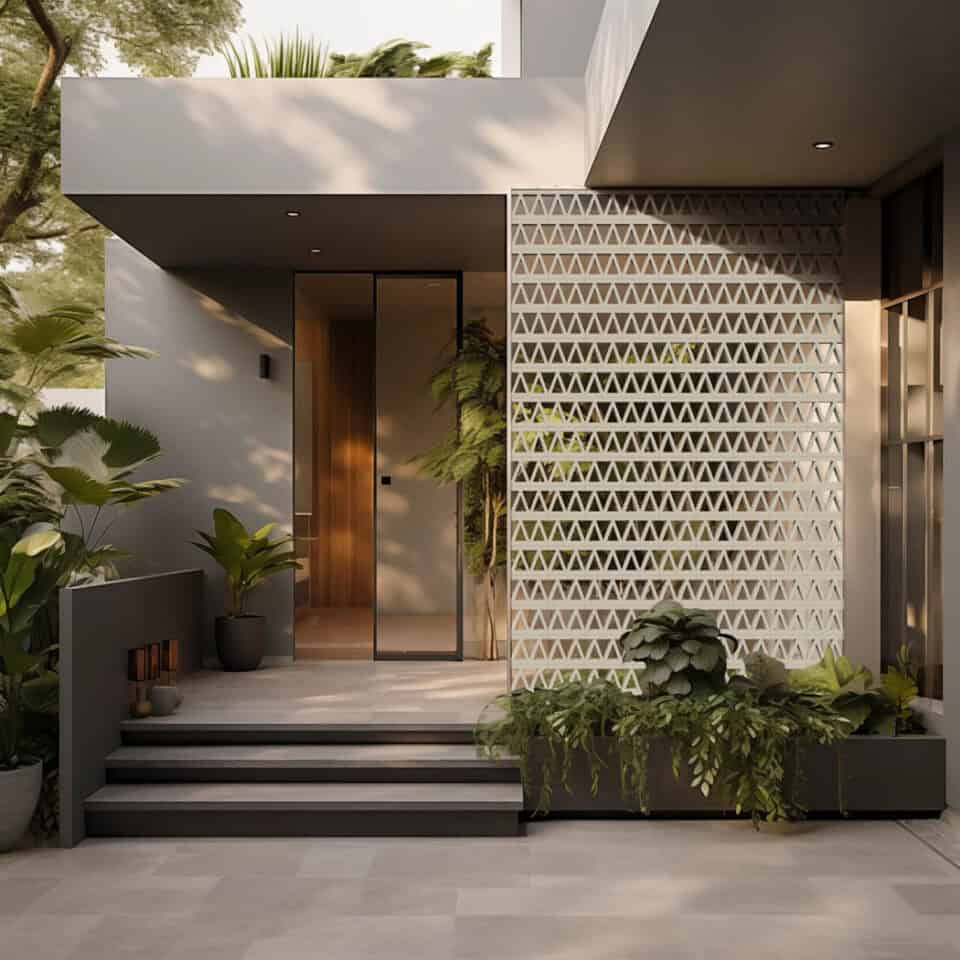Breeze blocks are making a significant comeback in today’s architecture and landscaping. With their unique blend of form and function, breeze blocks offer more than just aesthetic appeal—they provide ventilation, light diffusion, and a sense of openness. In this blog post, we’ll explore the versatility of breeze blocks and how they can elevate both residential and commercial spaces.
Introduction to Breeze Blocks
Breeze blocks first gained popularity in the 1950s and 1960s, primarily in mid-century modern architecture. Their decorative nature, combined with functionality, made them a staple for many outdoor spaces, especially in warm climates where airflow was crucial. Originally made from concrete or cement, modern breeze blocks now come in a variety of materials and finishes, making them adaptable to contemporary design trends.
Why Breeze Blocks Are Making a Comeback
In recent years, the design world has seen a resurgence of interest in breeze blocks. Their nostalgic charm, combined with their practical benefits, makes them a popular choice for both residential and commercial projects. Modern designers are reinterpreting the classic patterns to suit today’s architectural trends, creating fresh and innovative applications for this age-old material. Read more about the return of the breeze block in our guide.

Incorporating Breeze Blocks
Breeze blocks can be an eye-catching addition to any home, whether used as a subtle accent or a bold statement piece. They can be integrated into both indoor and outdoor spaces to create a seamless transition between environments.
Interior Spaces
Breeze blocks can be used as room dividers or decorative screens, offering privacy without sacrificing light or airflow. Their open design allows light to pass through, creating interesting shadows and adding texture to otherwise plain walls.
Exterior Spaces
Outdoors, breeze blocks are perfect for creating privacy walls or garden dividers. They offer the right balance of opacity and openness, giving you privacy without closing off the space entirely. Whether used to surround a patio or frame a garden, breeze blocks add an artistic touch to landscaping.
- Use breeze blocks as a feature wall in living rooms or patios.
- Create unique planters or garden borders with stacked breeze blocks.
- Build an outdoor shower screen or poolside privacy wall.
Find inspiration in our blog post on creative ways to incorporate breeze blocks into your project.

Benefits of Breeze Blocks in Outdoor Landscaping
Breeze blocks are particularly well-suited for outdoor applications, providing both beauty and practicality. In garden and patio areas, breeze blocks can help define spaces while still allowing airflow and natural light. Their porous structure also enables a cooling effect, making outdoor environments more comfortable.
- Air CirculationOne of the most significant advantages of breeze blocks is their ability to allow air to pass through, making them perfect for warm, sunny climates. In a patio setting, breeze blocks provide shade while promoting airflow, helping to keep outdoor areas cooler.
- Visual InterestWith their unique patterns, breeze blocks can break up monotonous walls or fences. Whether used to create a partial screen or a full wall, they add a layer of visual interest that other materials can't easily match.
Landscaping applications:
- Build a breeze block privacy fence that still allows for air and light
- Create garden dividers or seating using low walls of breeze blocks
- Use as a decorative base for outdoor planters
- Climb a creeping vine or plant up a breeze block wall

Breeze Block Colour & Design Trends for Modern Architecture
Today’s designers are pushing the boundaries of what breeze blocks can do by exploring new patterns, colors, and applications. From sleek, minimalistic designs to more intricate, decorative patterns, there is no shortage of creative possibilities.
- Patterns & ShapesThe geometric patterns of breeze blocks can be customized to suit any design aesthetic. Popular designs include interlocking circles, floral motifs, and abstract geometric shapes, which can be used to create stunning feature walls.
- Colours & FinishesGone are the days when breeze blocks were only available in dull gray concrete. Now, they come in a wide variety of colors and finishes to match the design needs of any project. Earth tones, sleek blacks, or even bold, bright colors can add a modern twist to traditional breeze blocks.
Current design trends
- Monochromatic breeze block walls for a sleek modern look
- Using coloured breeze blocks to add contrast to neutral architecture
- Combining different breeze blocks patterns for a dynamic effect

Sustainable Benefits of Breeze Blocks
As sustainability becomes a key concern in modern design, breeze blocks stand out as an eco-friendly choice. Their open design allows for natural ventilation, reducing the need for air conditioning in warm climates. Additionally, they can be made from environmentally friendly materials, contributing to greener building practices.
- Energy EfficiencyBreeze blocks help reduce the reliance on artificial cooling systems by promoting natural airflow and passive cooling. This makes them an excellent choice for energy-conscious homeowners and businesses.
- Eco-Friendly MaterialsMany breeze blocks are now made from recycled or sustainably sourced materials, further enhancing their appeal as a green building option.
Learn more in our blog post about how breeze blocks can transform commercial buildings into green spaces.
Conclusion
Breeze blocks are more than just a nostalgic nod to mid-century modernism—they’re a timeless, versatile element that can enhance both aesthetic and functional aspects of any space. Whether you’re looking to add a unique touch to your home or create a sustainable commercial project, breeze blocks offer endless design possibilities. Their combination of beauty, function, and sustainability ensures they will remain a design staple for years to come.